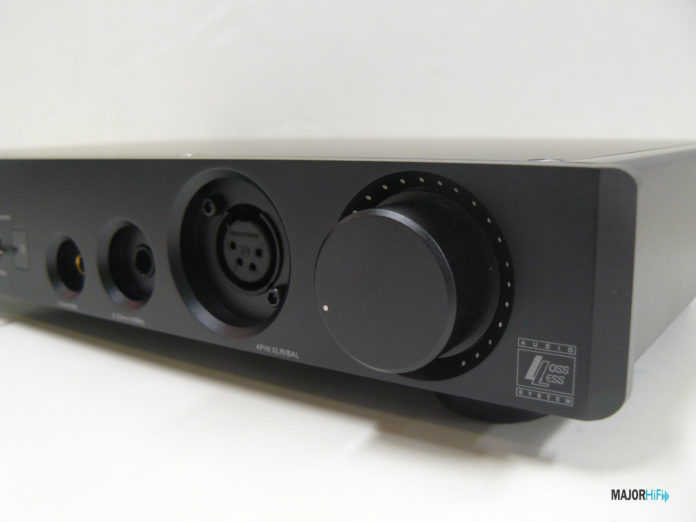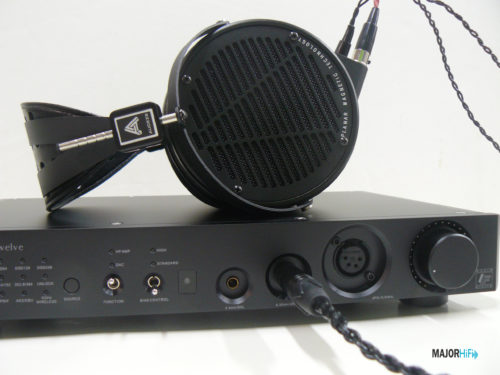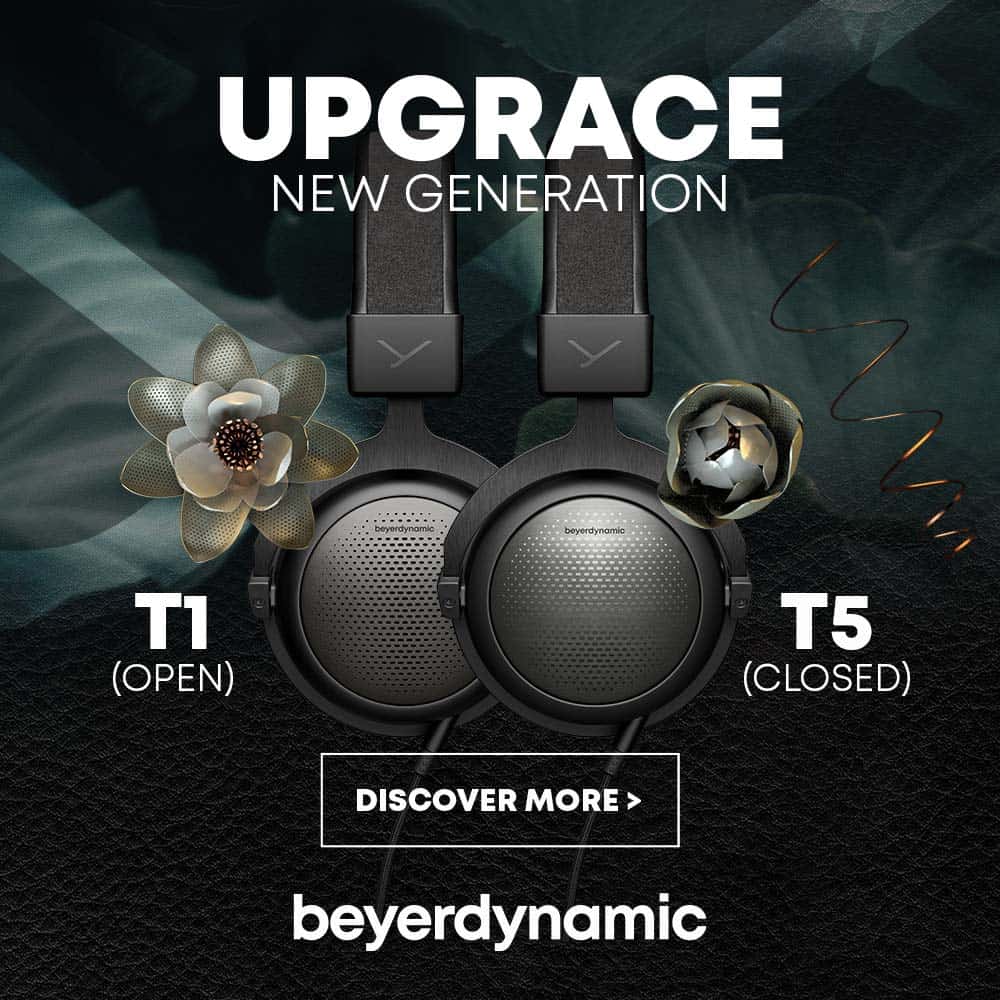It’s almost been a year since I reviewed the Questyle CMA 400i for Major HiFi. Since then, it’s become one of my favorite headphone amps around. I have now finally gotten my hands on the next iteration in its series, the CMA Twelve. I’ve waited a long time to see what this model had to offer over the 400i. It’s hard to imagine there is a better option, but the significant hike in price tells me otherwise. If the CMA 400i stood out as one of the best desktop DAC/Amps around, then you’ll understand how high my expectations are for their flagship device. The CMA Twelve runs for $1,499, so you can assume this to be aq considerably high-end system. Is it the perfect endgame amplifier?

What You Get
The Questyle CMA Twelve is a very large device that takes up most of the room of the packaging. You’ll receive a limited amount of accessories, and it even emits a USB cable to use the DAC. That item must be supplied yourself. What you can expect from the CMA Twelve are a power cable and remote control. It’s an interesting inclusion to have a remote, and Questyle gives you one that houses a ton of options. With it, you can easily cycle through multiple inputs with a push of a button and in a responsive manner. The inclusion of the remote just makes the accessibility of the CMA Twelve even easier.
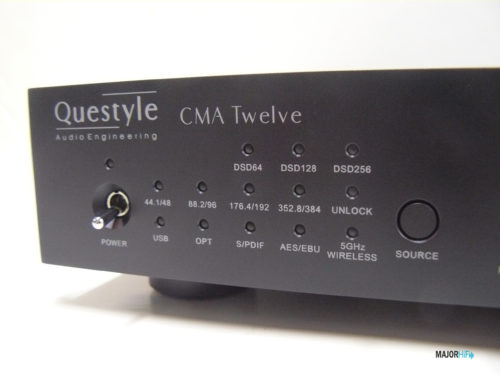
Build
I applauded the CMA 400i for having a great build, and the Twelve is even better. This unit not only has a durable construction, but the aesthetic is extremely sleek. It has an appearance that screams high-class. Its solid aluminum chassis immediately strikes me as impressive, just make sure your space has the room for it. The switches feel great, and are completely firm, not showing any looseness. The architecture is so well completed, and it forms one of the most solidly put-together amplifiers currently on the market. Totally worth its price already, as this is surely a system that’s made to last a very long time.
Features
Let’s get to what is actually on features on the CMA Twelve. Starting with the face of the device, you can already see a ton of features. Next to the power switch, you can see a whole host of LED lights. The bottom row of lights indicates which source you want to use. You have the choice of USB, optical, S/PDIF, AES/EBU, and 5GHz wireless. Use the source button on the right-hand side of the LEDs, or use the remote to cycle through these inputs. Above the sources is a row of sample rates the CMA Twelve is capable of. You have your standard 44.1/48kHz, all the way to 352.8/384kHz, supporting DSD64, DSD128, and DSD256.
You’ll then see another switch labeled “function” where you can access the DAC or headphone amp. Directly after that is another switch labeled “Bias Control.” This gives you two options, high, and standard. To my knowledge, this is meant to act as a headphone matching mode, where headphones of different specifications would be able to be powered to their fullest potential. I kept the switch on high for most of my testing, but I didn’t hear any substantial difference between the headphones I selected.
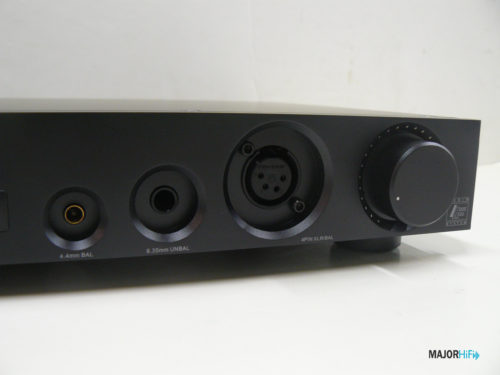
Ins and Outs
On the face of the CMA Twelve, you have three headphone inputs to choose from. You’ll be able to use 4.4mm balanced, quarter-inch, and 4-pin XLR. Two balanced and one unbalanced connection is more than you’re going to need for an amplifier of this caliber, but their inclusion is still appreciated. Using a 4.4mm headphone jack on a system like this always produces great results. The back of the CMA Twelve also has a large selection of inputs and outputs as well, starting with USB-A input for digital connections. Directly above that is an optical input. AES/EBU is connected through a 3-pin XLR input, with both SPDIF inputs sitting next to it, completing the digital section on the back of the CMA Twelve. For stereo out, you have dual 3-pin XLR and RCA connectors.
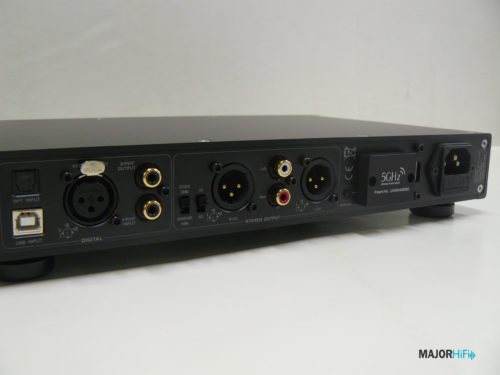
Sound Quality
Inside of the CMA Twelve is an AKM AK4490 DAC chip with true DSD. It didn’t take me long to completely fall head over heels for the sound of this amplifier. The work that this chipset puts into the fidelity of the sound is truly remarkable. Each headphone I tested not only brought forth the clearest details but spatiality was improved throughout the majority of my listening sessions. My time spent with the CMA Twelve housed some blissful, crisp textures, with an equal amount of transparency.
This is a reference system that doesn’t hide the details in cold neutrality, rather they pop out from the mix with full energy on display. The naturality of this amp will come through any headphones you put through it. With that being said, this isn’t an amplifier that will pump the volume. The goal of the CMA Twelve is to set a comfortable level of gain that feels natural. It’ll power high impedance headphones, but the amplitude won’t feel as chunky as other systems. The headphones I tested were the Kennerton Magni, Final Audio D8000, and the LCD X.
Kennerton Magni
I wasn’t initially the biggest fan of the Magni when I first listened to it, but apparently, this amp is magical and makes anything sound great. One of my issues with it was its piercing brightness, but the CMA Twelve helps smooth out the tonality without sacrificing its excellent level of clarity. High frequencies here are still bright in character, but receive a nice sparkle in the treble, and showcase a lot more air. It also helps give the Magni a lot more height than it originally had. Kennerton makes closed-backs that sound like open-backs, but that statement hasn’t been more true than when pairing them with the CMA Twelve. The spatial imaging is even more holographic here, and the separation is probably the best part about it. Layers were performed articulately and with plenty of air between the spaces, culminating in a truly immersive experience.
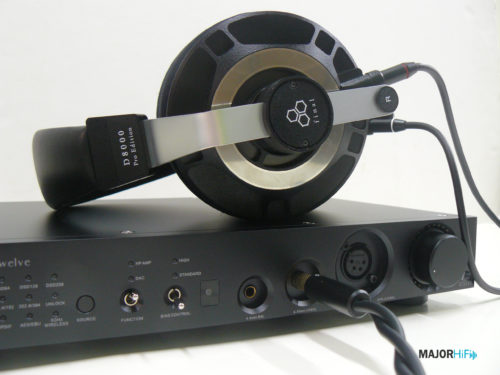
Final Audio D8000
If that’s what closed-back sounds like, what about an open-back or a semi-open back in the case of the D8000, a semi-open back. It’s as wonderful as you’d imagine, taking an already rich sound signature, and spreading it out even more. It makes the detail even more overwhelming. The bass here was extended even deeper, creating a pulsating rumble within my chest. Sub-bass isn’t overwhelming but it’s definitely more felt here, with the timbre feeling even freer within the sound field. High frequencies weren’t as tonally sharp as they were on the Magni, but instead, appear more delicate and clean. It keeps the immersion while demonstrating a deeper richness, making this one of the most ideal pairings.
Audeze LCD-X
With the LCD-X, I made sure I picked the Audeze with my favorite soundstage. The results didn’t disappoint. One question I had going in was if the LCD-X kept its warmth, and I was happy that it did. Here the sound signature was able to showcase a bit more intimacy with a more natural timbre. The warmth still exists, but in a more subtle form, which makes acoustic instruments especially smooth. Of course, the highlight here is soundstage, but to a more accurate degree than the rest of the headphones I tested. Positioning felt a bit more solid, with less air, more emphasis on authenticity to the mix.
Summary
This is a must-have amplifier. If you’re willing to invest, chances are you won’t need another system. My time with the CMA Twelve has brought me some of the most Ideal high-fidelity listening experiences, with its unmatched level of spatiality, and rich detail. It might lack a few modern features like MQA support or true analog connection, but there’s nothing else like it when it comes to the sound.

The Questyle CMA Twelve is available from Audio 46.
Compare the ranking of various headphones, earbuds and in-ear monitors using our tools.
Discuss this, and much more, over on our forum.
---MAJORHIFI may receive commissions from retail offers.


